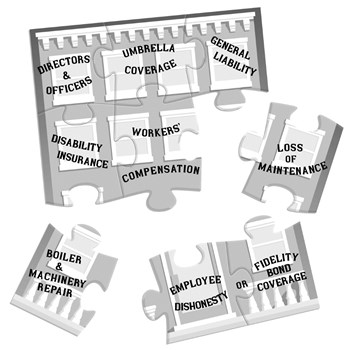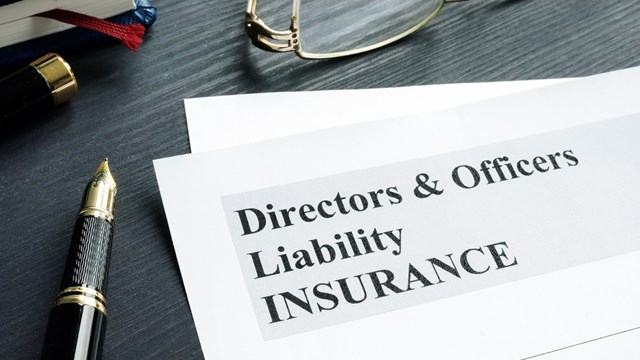
Insurance is a relatively simple concept that any homeowner can understand. You purchase a policy paying a premium to an insurer, and when a claim gets filed, the insurer pays. So in theory, insuring your co-op, condo or HOA should be virtually the same principle—only on a larger scale, right?
Wrong. Insuring a homeowner association complex is a complicated, multi-layered process that board members should take seriously, and the proper amount of time to understand. Having the right kinds of insurance and the correct amount of coverage is extremely important for your community’s financial and physical well-being. A solid understanding of what comprises a typical co-op or condo policy will help the board not only protect your unit owners and shareholders, but the all too important investment they’ve made in their homes.
The Right Package
Insurance coverage for your condo or co-op is made up of many components, beginning with property insurance, which as the name suggests, protects your physical property. According to Edward J. Mackoul, CIC, president of Mackoul & Associates Inc., an insurance brokerage with offices in New York and New Jersey, property insurance covers the outer structure, any damage caused to the building as well as any personal property owned by the association: tables, chairs, desks, conference room furniture, and outside patio furniture. It would also cover the income that the association cannot collect in case of a claim. “If there was a fire, for example, and a unit owner hasn't been paying the maintenance fee, the property coverage covers the income that the association is losing,” he says.
General liability is another piece of the package and it covers two main things, says Mackoul: bodily injury and property damage. Injury includes slips and falls—people getting injured and suing for damages, wherever they were on the premises or in the building. Property damage entails anything that the association has done that has caused harm or damaged someone else, such as a pipe bursting and subsequently leaking into and flooding several units.
Worker's compensation can be added to the basic insurance package to protect employees of the association in case they are injured while working, says Michele Chierico, president of Generazio Associates Inc. in Bloomfield, New Jersey.
The board may also choose to add on directors and officers or D&O coverage, which protects the actions and decisions of those who are serving on the board as well as on various committees. It protects the Board of Directors who are giving their time to make decisions on behalf of the association, says Chierico.
A Closer Look
According to Alnoor Ladha, the executive vice president of Vanderbilt Properties Insurance Brokerage, LLC, in Manhattan, the main components of a building policy are property, general liability, boiler and machinery, crime /fidelity, workers compensation and disability. Beyond those policies, buildings need the additional liability coverage that comes in the form of umbrella coverage.
Ladha says property insurance covers first-party losses while general liability covers third-party claims (which primarily arise in the form of slip-and-falls). A standard general liability policy provides about $1 million per occurrence, or $2 million in aggregate coverage.
“When you have a general liability policy and there’s one occurrence, somebody trips and falls, he or she would be able to claim up to $1 million. If there are multiple occurrences, if two or three people fall within that policy period, then you have a limit of $2 million…that’s the maximum they will pay in a given policy period [for all slips and falls].”
Beyond that coverage, insurance companies also offer umbrella liability, which is additional liability coverage beyond the standard $1 million policy.
“If you have $1 million in primary general liability coverage, that only covers you for up to $1 million,” Ladha says. “In today’s litigious world, $1 million in coverage sometimes is not sufficient, because the legal fees alone can eat up the million-dollar limit. So we provide our clients with up to $200 million in excess umbrella coverage.”
That same principle applies to directors and officers coverage, which covers claims made against the board for mistakes or mismanagement. Generally speaking, Ladha says a building will have $1 million of coverage and can buy up to $200 million in umbrella coverage in addition to the initial D&O coverage.
Building vs. Homeowner Coverage
Because they live in an apartment building, some condo owners and co-op shareholders may feel they don’t need homeowner’s insurance. This isn’t true. Just like any single-family homeowner, condo and co-op owners need to have their own property insured via a homeowner’s policy.
“The individual owner needs to insure their own property content as well as the walls within, because the condo association only covers the common walls,” says Chierico.
Mackoul says that divisions in coverage responsibility can be found in your community's bylaws but in general the association is responsible for the structure itself such as floors, walls, ceilings and that the unit owner is responsible for any improvements or amendments that they have made, their personal property and anything inside the unit. Homeowners' also provides coverage in case the unit owner is sued and covers damage or injury caused to another resident.
According to Ladha, when it comes to building insurance, there are essentially no differences between what a co-op building and a condo building need. However, the kind of coverage needed by the homeowner can be affected by whether or not he or she lives in a condo or co-op. In a co-op, what the homeowner needs to have insured will be dictated by the building’s proprietary lease.
“The fundamental distinction is that with a co-op, a tenant shareholder owns shares,” Ladha says. “In a condominium, you own title and a deed to your unit. And that changes things considerably, because in a co-op the proprietary lease will dictate what some of the insurance will pay or not pay for [in an individual apartment]. In a condominium, you own the unit, and therefore there is no common lease that will help [the homeowner].
“Generally speaking,” concludes Ladha, “the property coverage, the liability coverage, the boiler, the crime [fidelity], the directors and officers coverage for both condominiums and co-op corporation—all of these coverages are almost identical. The question then becomes where would you draw the line for who pays for what. It depends. In a co-op, the proprietary lease will dictate. If it’s a condominium then the unit owner is responsible, period.”
Determining Cost
A lot of factors go into determining how much a building will pay for its coverage.
“It depends on the type of policy and then there are a number of factors,” says Mackoul. “One factor is the amount of coverage on the property side, you can be insured for one million or 100 million; two is the number of units in the buildings, more units is more cost. Worker's comp is based on payroll and homeowners is based on the amount of coverage.”
Chierico adds that the value and construction of the property, location as well as prior losses experienced by the building affect the cost to insure the property.
Both Mackoul and Chierico also stress the importance of choosing coverage that is thorough and encompasses all aspects of your property, even if it means paying more in yearly premiums.
“One mistake that I see boards making is they don't get the right coverage,” says Mackoul. “The cheapest option isn't always the best one, so it's not best to look just at price. There are differences in types of policies. A board may see a $500 policy and a $1,000 policy, and they'll take the $500 one thinking it is the same, and it's not. A lot of times they don't base the decision on coverage.”
He also recommends working with an agent that specializes in condo and co-op insurance. “Condo and co-op insurance is a niche market, you need to deal with a specialist.”
The Board's Role
Both Chierico and Ladha say it’s important—if not vital—for board members to take an active role in learning about their building’s policy and understanding it.
Chierico says it is imperative that boards understand what they are purchasing so they are properly insured and there are no gaps in coverage. “They don’t want to have a claim and then find out there is no coverage,” she says.
One variable always is replacement cost. “If the building is undervalued and some damage happens…then you’ll have some serious problems—there wouldn’t be enough money from the insurance carrier to repair the building,” Ladha says. “So the board has to be very cognizant of the limits that the insurance policy will provide. It’s the same with the board’s directors and officers policy; these are unpaid volunteers, and if they don’t have enough D&O coverage, then a claim can be brought against them personally. They need to make sure they have a good D&O policy that will defend them against suits arising out of the decisions they make on behalf of the building.”
So whether you live in a co-op or a condo, having the right kind and amount of insurance is an essential ingredient that will provide some necessary peace of mind for you and your board.
Anthony Stoeckert is a freelance writer and a frequent contributor to The New Jersey Cooperator. Editorial Assistant Maggie Puniewska contributed to this article.






Leave a Comment